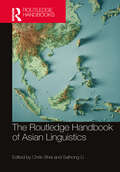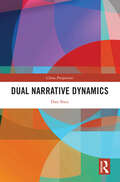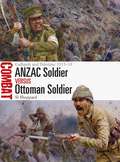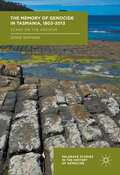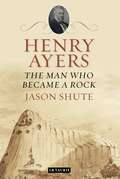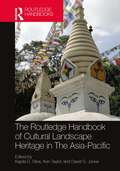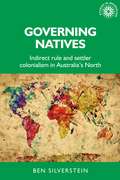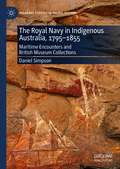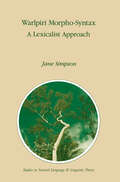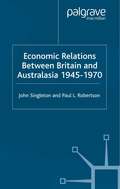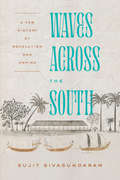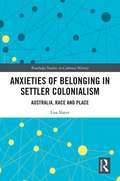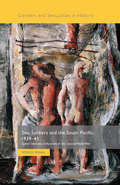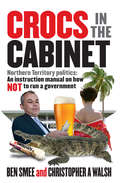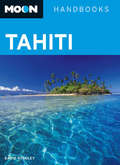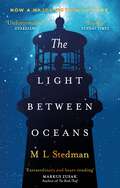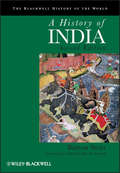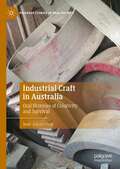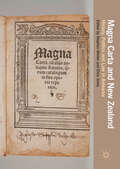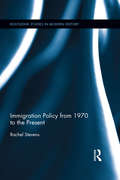- Table View
- List View
The Routledge Handbook of Asian Linguistics
by Chris Shei Saihong LiThe Routledge Handbook of Asian Linguistics provides a comprehensive overview of the ways in which Asian languages should be conceptualized as a whole, the distinct characteristics of each language group, and the relationships and results of interactions between the languages and language families in Asia. Asia is the largest and the most populous continent on Earth, and the site of many of the first civilizations. This Handbook aims to provide a systematic overview of Asian languages in both theoretical and functional perspectives, optimally combining the two in intercultural settings. In other words, the text will provide a reference for researchers of individual Asian languages or language groups against the background of the entire range of Asian languages. Not only does the Handbook act as a reference to a particular language, it also connects each language to other Asian languages in the perspective of the entire Asian continent. Cultural roles and communicative functions of language are also emphasized as an important domain where the various Asian languages interact and shape each other. With extensive coverage of both theoretical and applied linguistic topics, The Routledge Handbook of Asian Linguistics is an indispensable resource for students and researchers working in this area.
Dual Narrative Dynamics (China Perspectives)
by Dan ShenCombining narratological and stylistic methods, this book theorizes dual narrative dynamics comprised of plot development and covert progression, and demonstrates the consequences for the interpretation of literary works.In narratives with such dynamics, writers work simultaneously with overt and covert trajectories of signification, establishing a range of relationships between them. The two parallel narrative movements may complement, contradict or even subvert each other, and these relationships significantly influence readers’ understanding not just of events but also of characters, themes, and aesthetic values. The book provides a systematic theoretical account of such previously neglected dual narrative dynamics, substantiated and enriched by the textual analysis of works by Ambrose Bierce, Kate Chopin, Franz Kafka, and Katherine Mansfield. The study explores the many ways that these authors have used dual dynamics to increase the power of their narratives. In addition, the book identifies the challenges such dual dynamics present not only for narratology but also for stylistics and translation studies, and it develops sound and provocative proposals for meeting those challenges.In taking an interdisciplinary approach, this book will appeal to scholars and students in the fields of narrative and literary theory, literary criticism, literary stylistics, and translation studies.
Dual Narrative Dynamics (China Perspectives)
by Dan ShenCombining narratological and stylistic methods, this book theorizes dual narrative dynamics comprised of plot development and covert progression, and demonstrates the consequences for the interpretation of literary works.In narratives with such dynamics, writers work simultaneously with overt and covert trajectories of signification, establishing a range of relationships between them. The two parallel narrative movements may complement, contradict or even subvert each other, and these relationships significantly influence readers’ understanding not just of events but also of characters, themes, and aesthetic values. The book provides a systematic theoretical account of such previously neglected dual narrative dynamics, substantiated and enriched by the textual analysis of works by Ambrose Bierce, Kate Chopin, Franz Kafka, and Katherine Mansfield. The study explores the many ways that these authors have used dual dynamics to increase the power of their narratives. In addition, the book identifies the challenges such dual dynamics present not only for narratology but also for stylistics and translation studies, and it develops sound and provocative proposals for meeting those challenges.In taking an interdisciplinary approach, this book will appeal to scholars and students in the fields of narrative and literary theory, literary criticism, literary stylistics, and translation studies.
ANZAC Soldier vs Ottoman Soldier: Gallipoli and Palestine 1915–18 (Combat)
by Si SheppardIn 1915–18, ANZAC and Ottoman soldiers clashed on numerous battlefields, from Gallipoli to Jerusalem. This illustrated study investigates the two sides' fighting men.The Gallipoli campaign of 1915–16 pitched the Australian and New Zealand volunteers known as the ANZACs into a series of desperate battles with the Ottoman soldiers defending their homeland. In August 1915, the bitter struggle for the high ground known as Chunuk Bair saw the peak change hands as the Allies sought to overcome the stalemate that set in following the landings in April. The ANZACs also played a key part in the battle of Lone Pine, intended to divert Ottoman attention away from the bid to seize Chunuk Bair. The Gallipoli campaign ended in Allied evacuation in the opening days of 1916. Thereafter, many ANZAC units remained in the Middle East and played a decisive role in the Allies' hard-fought advance through Palestine that finally forced the Turks to the peace table. The fateful battle of Beersheba in October 1917 pitted Australian mounted infantry against Ottoman foot soldiers as the Allies moved on Jerusalem. In this book, noted military historian Si Sheppard examines the fighting men on both sides who fought at Lone Pine, Chunuk Bair and Beersheba. The authoritative text is supported by specially commissioned artwork and mapping plus carefully chosen archive photographs.
ANZAC Soldier vs Ottoman Soldier: Gallipoli and Palestine 1915–18 (Combat)
by Si SheppardIn 1915–18, ANZAC and Ottoman soldiers clashed on numerous battlefields, from Gallipoli to Jerusalem. This illustrated study investigates the two sides' fighting men.The Gallipoli campaign of 1915–16 pitched the Australian and New Zealand volunteers known as the ANZACs into a series of desperate battles with the Ottoman soldiers defending their homeland. In August 1915, the bitter struggle for the high ground known as Chunuk Bair saw the peak change hands as the Allies sought to overcome the stalemate that set in following the landings in April. The ANZACs also played a key part in the battle of Lone Pine, intended to divert Ottoman attention away from the bid to seize Chunuk Bair. The Gallipoli campaign ended in Allied evacuation in the opening days of 1916. Thereafter, many ANZAC units remained in the Middle East and played a decisive role in the Allies' hard-fought advance through Palestine that finally forced the Turks to the peace table. The fateful battle of Beersheba in October 1917 pitted Australian mounted infantry against Ottoman foot soldiers as the Allies moved on Jerusalem. In this book, noted military historian Si Sheppard examines the fighting men on both sides who fought at Lone Pine, Chunuk Bair and Beersheba. The authoritative text is supported by specially commissioned artwork and mapping plus carefully chosen archive photographs.
The Memory of Genocide in Tasmania, 1803-2013: Scars on the Archive (Palgrave Studies in the History of Genocide)
by Jesse ShipwayThis book presents a philosophical history of Tasmania’s past and present with a particular focus on the double stories of genocide and modernity. On the one hand, proponents of modernisation have sought to close the past off from the present, concealing the demographic disaster behind less demanding historical narratives and politicised preoccupations such as convictism and environmentalism. The second story, meanwhile, is told by anyone, aboriginal or European, who has gone to the archive and found the genocidal horrors hidden there. This volume blends both stories. It describes the dual logics of genocide and modernity in Tasmania and suggests that Tasmanians will not become more realistic about the future until they can admit a full recognition of the colonial genocide that destroyed an entire civilisation, not much more than 200 years ago.
Henry Ayers: The Man Who Became a Rock
by Jason Shute'The most wonderful natural feature I have ever seen.' With these words William Gosse expressed the awe he and many others have felt at the natural phenomenon of Uluru. The first white person to reach the central Australian monolith, he gave it the name Ayers Rock. But who was Henry Ayers, the man whose name is forever associated with Australia's most recognisable natural icon? What did he do to deserve this accolade? And why should historians of Australia and the Empire still remember him today?Although the Rock's ancient indigenous name, Uluru, has now been restored, in place of the nineteenth-century version, the name of Ayers is still recognisable well over a century after the Rock's 'discovery' in 1873. Indeed, the rock that bore his name is one of the most famous natural wonders on earth and attracts over 400,000 visitors every year. This book - the first biography of Henry Ayers - focuses attention on the man behind the name and examines all aspects of his life - as a migrant from the naval town of Portsmouth in southern England, miner, businessman and politician - both public and private. Henry Ayers was a complex character who played an integral and leading role in the development of the then British Province of South Australia. Despite landing amidst the colony's first depression, Ayers went on to win the Secretaryship of the South Australian Mining Association in 1845 and forged a successful career based on the wealth of the 'Monster' copper mine at Burra Burra, north of Adelaide. Jason Shute describes how Ayers made his way from humble origins to South Australia's parliament and ultimately achieved the highest elected office of the South Australian polity, as its Premier, no fewer than seven times. Shute also illuminates Ayers' personal life: his relationships with his wife and children; his tempestuous friendship and rivalry with Henry Rymill, a relative of the wealthiest shareholder in the Burra Burra mine; and his defining connection with William Gosse, the explorer and surveyor, who esteemed him so highly that he honoured him with the connection for which he is remembered internationally.This biography places the life of this prominent Australian figure in the context of Australia's colonial history and charts the development of the province of South Australia. It offers a vivid portrait of a man who was consistently in the upper echelons of influence and authority in southern Australia and whose legacy lives on in the name of one of the most famous and recognisable wonders of the world.
The Routledge Handbook of Cultural Landscape Heritage in The Asia-Pacific (Routledge Handbooks on Museums, Galleries and Heritage)
by Kapila D. Silva Ken Taylor David S. JonesThe Routledge Handbook of Cultural Landscape Heritage in the Asia-Pacific revisits the use, growth, and potential of the cultural landscape methodology in the conservation and management of culture-nature heritage in the Asia-Pacific region. Taking both a retrospective and prospective view of the management of cultural heritage in the region, this volume argues that the plurality and complexity of heritage in the region cannot be comprehensively understood and effectively managed without a broader conceptual framework like the cultural landscape approach. The book also demonstrates that such an approach facilitates the development of a flexible strategy for heritage conservation. Acknowledging the effects of rapid socio-economic development, globalization, and climate change, contributors examine the pressure these issues place on the sustenance of cultural heritage. Including chapters from more than 20 countries across the Asia-Pacific region, the volume reviews the effectiveness of theoretical and practical potentials afforded by the cultural landscape approach and examines how they have been utilized in the Asia-Pacific context for the last three decades. The Routledge Handbook of Cultural Landscape Heritage in the Asia-Pacific provides a comprehensive analysis of the processes of cultural landscape heritage conservation and management. As a result, it will be of interest to academics, students, and professionals who are based in the fields of cultural heritage management, architecture, urban planning, landscape architecture, and landscape management.
Governing natives: Indirect rule and settler colonialism in Australia's north (Studies in Imperialism)
by Ben SilversteinIn the 1930s, a series of crises transformed relationships between settlers and Aboriginal people in Australia’s Northern Territory. By the late 1930s, Australian settlers were coming to understand the Northern Territory as a colonial formation requiring a new form of government. Responding to crises of social reproduction, public power, and legitimacy, they re-thought the scope of settler colonial government by drawing on both the art of indirect rule and on a representational economy of Indigenous elimination to develop a new political dispensation that sought to incorporate and consume Indigenous production and sovereignties. This book locates Aboriginal history within imperial history, situating the settler colonial politics of Indigeneity in a broader governmental context.
Governing natives: Indirect rule and settler colonialism in Australia's north (Studies in Imperialism)
by Ben SilversteinIn the 1930s, a series of crises transformed relationships between settlers and Aboriginal people in Australia’s Northern Territory. By the late 1930s, Australian settlers were coming to understand the Northern Territory as a colonial formation requiring a new form of government. Responding to crises of social reproduction, public power, and legitimacy, they re-thought the scope of settler colonial government by drawing on both the art of indirect rule and on a representational economy of Indigenous elimination to develop a new political dispensation that sought to incorporate and consume Indigenous production and sovereignties. This book locates Aboriginal history within imperial history, situating the settler colonial politics of Indigeneity in a broader governmental context.
The Royal Navy in Indigenous Australia, 1795–1855: Maritime Encounters and British Museum Collections (Palgrave Studies in Pacific History)
by Daniel SimpsonThis book offers the first in-depth enquiry into the origins of 135 Indigenous Australian objects acquired by the Royal Navy between 1795 and 1855 and held now by the British Museum. In response to increasing calls for the ‘decolonisation’ of museums and the restitution of ethnographic collections, the book seeks to return knowledge of the moments, methods, and motivations whereby Indigenous Australian objects were first collected and sent to Britain. By structuring its discussion in terms of three key ‘stages’ of a typical naval voyage to Australia—departure from British shores, arrival on the continent’s coasts, and eventual return to port—the book offers a nuanced and multifaceted understanding of the pathways followed by these 135 objects into the British Museum. The book offers important new understandings of Indigenous Australian peoples’ reactions to naval visitors, and contains a wealth of original research on the provenance and meaning of some of the world’s oldest extant Indigenous Australian object collections.
Warlpiri Morpho-Syntax: A Lexicalist Approach (Studies in Natural Language and Linguistic Theory #23)
by J. SimpsonEconomic Relations Between Britain and Australia from the 1940s-196 (Cambridge Imperial and Post-Colonial Studies)
by J. Singleton Paul RobertsonIn the early postwar era, Britain enjoyed a very close economic relationship with Australia and New Zealand through their common membership of the Sterling Area and the Commonwealth Preference Area. This book examines the breakdown of this relationship in the 1950 and 1960s. Britain and Australasia were driven apart by disputes over industrial protection, agriculture, capital supplies, and relations with other countries. Special emphasis is given to the implications for Australia and New Zealand of Britain's growing interest in European integration.
Waves Across the South: A New History of Revolution and Empire
by Sujit SivasundaramThis is a story of tides and coastlines, winds and waves, islands and beaches. It is also a retelling of indigenous creativity, agency, and resistance in the face of unprecedented globalization and violence. Waves Across the South shifts the narrative of the Age of Revolutions and the origins of the British Empire; it foregrounds a vast southern zone that ranges from the Arabian Sea and southwest Indian Ocean across to the Bay of Bengal, and onward to the South Pacific and the Tasman Sea. As the empires of the Dutch, French, and especially the British reached across these regions, they faced a surge of revolutionary sentiment. Long-standing venerable Eurasian empires, established patterns of trade and commerce, and indigenous practice also served as a context for this transformative era. In addition to bringing long-ignored people and events to the fore, Sujit Sivasundaram opens the door to new and necessary conversations about environmental history, the consequences of historical violence, the legacies of empire, the extraction of resources, and the indigenous futures that Western imperialism cut short. The result is nothing less than a bold new way of understanding our global past, one that also helps us think afresh about our shared future.
Waves Across the South: A New History of Revolution and Empire
by Sujit SivasundaramThis is a story of tides and coastlines, winds and waves, islands and beaches. It is also a retelling of indigenous creativity, agency, and resistance in the face of unprecedented globalization and violence. Waves Across the South shifts the narrative of the Age of Revolutions and the origins of the British Empire; it foregrounds a vast southern zone that ranges from the Arabian Sea and southwest Indian Ocean across to the Bay of Bengal, and onward to the South Pacific and the Tasman Sea. As the empires of the Dutch, French, and especially the British reached across these regions, they faced a surge of revolutionary sentiment. Long-standing venerable Eurasian empires, established patterns of trade and commerce, and indigenous practice also served as a context for this transformative era. In addition to bringing long-ignored people and events to the fore, Sujit Sivasundaram opens the door to new and necessary conversations about environmental history, the consequences of historical violence, the legacies of empire, the extraction of resources, and the indigenous futures that Western imperialism cut short. The result is nothing less than a bold new way of understanding our global past, one that also helps us think afresh about our shared future.
Anxieties of Belonging in Settler Colonialism: Australia, Race and Place (Routledge Studies in Cultural History #65)
by Lisa SlaterThis book analyses the anxiety "well-intentioned" settler Australian women experience when engaging with Indigenous politics. Drawing upon cultural theory and studies of affect and emotion, Slater argues that settler anxiety is an historical subjectivity which shapes perception and senses of belonging. Why does Indigenous political will continue to provoke and disturb? How does settler anxiety inform public opinion and "solutions" to Indigenous inequality? In its rigorous interrogation of the dynamics of settler colonialism, emotions and ethical belonging, Anxieties of Belonging has far-reaching implications for understanding Indigenous-settler relations.
Anxieties of Belonging in Settler Colonialism: Australia, Race and Place (Routledge Studies in Cultural History #65)
by Lisa SlaterThis book analyses the anxiety "well-intentioned" settler Australian women experience when engaging with Indigenous politics. Drawing upon cultural theory and studies of affect and emotion, Slater argues that settler anxiety is an historical subjectivity which shapes perception and senses of belonging. Why does Indigenous political will continue to provoke and disturb? How does settler anxiety inform public opinion and "solutions" to Indigenous inequality? In its rigorous interrogation of the dynamics of settler colonialism, emotions and ethical belonging, Anxieties of Belonging has far-reaching implications for understanding Indigenous-settler relations.
Sex, Soldiers and the South Pacific, 1939-45: Queer Identities in Australia in the Second World War (Genders and Sexualities in History)
by Yorick SmaalSex, Soldiers and the South Pacific, 1939-45 explores the queer dynamics of war across Australia and forward bases in the south seas. It examines relationships involving Allied servicemen, civilians and between the legal and medical fraternities that sought to regulate and contain expressions of homosex in and out of the forces.
Crocs in the Cabinet: Northern Territory politics – an instruction manual on how NOT to run a government
by Ben Smee Chistopher A WalshGoings-on in Northern Territory politics from 2012-2016 may read like satire, but it is all true. These are stories you couldn't make up. This book is an instruction manual on how NOT to run a government.In the Top End, politics is not a numbers game, it is a blood sport.In comparison to Rudd, Gillard, Abbott and Turnbull, the goings-on in the Northern Territory parliament are like watching a troop of clowns throwing knives into each other's backs.CROCS IN THE CABINET is partly a serious political book, partly a riotous look at the characters, the scandals and the incompetence of Northern Territory politics. It will make you laugh, cry, wince and shake your head as you read of:- a minister with a hostess club bill- a masturbating minister and the lewd videos he sent someone other than his wife- why a minister shouted 'we are in love' on the floor of the parliament- how the Chief Minister stared down a coup- how an MP forced the evacuation of a hotel- why an MP went fishing instead of dealing with leadership matters- exactly how bonkers the NT parliament really is.Written by two of the NT NEWS's best journalists, Walkley Award-winning Ben Smee and award-winning Christopher A. Walsh, this is FEAR AND LOATHING ON THE CAMPAIGN TRAIL meets FAWLTY TOWERS.
Moon Tahiti: Including The Cook Islands (Moon Handbooks)
by David StanleySouth Pacific expert David Stanley knows the best way to vacation in Tahiti, from browsing the Papeete market to snorkeling off the island of Moorea. David also includes unique trip ideas like The Best of French Polynesia and Underwater in the Tuamotu Islands. Complete with details on taking lagoon tours and jeep safaris, lounging in Polynesian spas, and partaking in lavish seafood buffets, Moon Tahiti gives travelers the tools they need to create a more personal and memorable experience.
The Light Between Oceans: The emotional, must-read Sunday Times bestselling historical novel
by M L StedmanDiscover the sweeping Richard and Judy Book Club pick and Sunday Times bestselling historical romance, now a major motion picture starring Alicia Vikander, Michael Fassbender, and Rachel Weisz.OVER FOUR MILLION COPIES SOLD'An extraordinary book…Unforgettable' Guardian'A moving tale . . . prepare to weep' New York Times'Irresistible . . . a high concept plot that keeps you riveted from the first page' Oprah Magazine____________________After experiencing the horrors of The Western Front, Tom moves to Janus Island to work as a lighthouse keeper. He hopes that life on the remote island with his wife Izzy will bring him peace following the war.The two of them are happy together, although frustrations rise the longer they try for a child that never comes.But then, one day, a boat washes up on the shore of their little island. In it, lies a dead man - and a crying baby.Faced with an impossible decision, Tom and Izzy do what they think is right and follow their hearts. What happens next will break yours.____________________Praise for The Light Between Oceans:'A love story that is both persuasive and tender' Sunday Times‘A moving tale. One of this year's must-reads’ Stylist Magazine‘The characters are beautifully drawn . . . A completely unique read.’ Heat Magazine‘Mesmerising . . . the sheer passion and poetry of Stedman's prose carries us on a wave of emotion and heartbreak.’ Australian Woman's Weekly‘Delicate and imaginative . . . beautifully written . . . deserves every single bit of its success.’ ScotsmanWHAT READERS ARE SAYING:***** 'A beautiful, poignant story, very well told'***** 'By far, one of the best books I've ever read'***** 'A stunning and enjoyable read, one you won't forget'
A History of India
by Burton SteinThis new edition of Burton Stein's classic A History of India builds on the success of the original to provide an updated narrative of the development of Indian society, culture, and politics from 7000 BC to the present. New edition of Burton Stein’s classic text provides a narrative from 7000 BC up to the twenty-first century Includes updated and extended coverage of the modern period, with a new chapter covering the death of Nehru in 1964 to the present Expands coverage of India's internal political and economic development, and its wider diplomatic role in the region Features a new introduction, updated glossary and further reading sections, and numerous figures, photographs and fully revised maps
Industrial Craft in Australia: Oral Histories of Creativity and Survival (Palgrave Studies in Oral History)
by Jesse Adams SteinThis book is the first of its kind to investigate the ongoing significance of industrial craft in deindustrialising places such as Australia. Providing an alternative to the nostalgic trope of the redundant factory ‘craftsman’, this book introduces the intriguing and little-known trade of engineering patternmaking, where objects are brought to life through the handmade ‘originals’ required for mass production.Drawing on oral histories collected by the author, this book highlights the experiences of industrial craftspeople in Australian manufacturing, as they navigate precarious employment, retraining, gendered career pathways, creative expression and technological change. The book argues that digital fabrication technologies may modify or transform industrial craft, but should not obliterate it. Industrial craft is about more than the rudimentary production of everyday objects: it is about human creativity, material knowledge and meaningful work, and it will be key to human survival in the troubled times ahead.
Magna Carta and New Zealand: History, Politics and Law in Aotearoa
by Stephen Winter and Chris JonesThis volume is the first to explore the vibrant history of Magna Carta in Aotearoa New Zealand’s legal, political and popular culture. Readers will benefit from in-depth analyses of the Charter’s reception along with explorations of its roles in regard to larger constitutional themes.The common thread that binds the collection together is its exploration of what the adoption of a medieval charter as part of New Zealand’s constitutional arrangements has meant – and might mean – for a Pacific nation whose identity remains in flux. The contributions to this volume are grouped around three topics: remembrance and memorialization of Magna Carta; the reception of the Charter by both Māori and non-Māori between 1840 and 2015; and reflection on the roles that the Charter may yet play in future constitutional debate. This collection provides evidence of the enduring attraction of Magna Carta, and its importance as a platform of constitutional aspiration.
Immigration Policy from 1970 to the Present (Routledge Studies in Modern History)
by Rachel StevensThis book examines national debates on immigration, asylum seekers and guest worker programs from 1970 to the present. Over the past 45 years, contemporary immigration has had a profound impact throughout North America, Europe and Australasia, yet the admission of ethnically diverse immigrants was far from inevitable. In the midst of significant social change, policymakers grappled with fundamental questions: what is the purpose of immigration in an age of mass mobility? Which immigrants should be selected and potentially become citizens and who should be excluded? How should immigration be controlled in an era of universal human rights and non-discrimination? Stevens provides an in-depth case study comparison of two settler societies, Australia and the United States, while drawing parallels with Europe, Canada and New Zealand. Though contemporary immigration history that focuses on one national setting is well established, this book is unique because it actively compares how a number of societies debated vexing immigration policy challenges. The book also explores the ideas, values and principles that underpin this contentious area of public policy, and in doing so permits a broader understanding of contemporary immigration than outlining policies alone.
